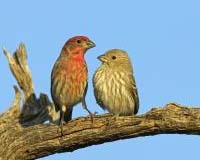 |
Singapore (AFP) Oct 1, 2010 Sharon Chan peered through a pair of binoculars and zoomed in on hundreds of birds feeding on crustaceans and invertebrates at a wildlife sanctuary on Singapore's northern coast. "Those are plovers because their bills are very short," explained Chan, the assistant director at the 130-hectare (321-acre) Sungei Buloh Wetland Reserve, separated by a narrow waterway from Malaysia's bustling city of Johor Bahru. Nearby, a White-breasted Waterhen foraged for food and further away herons and egrets could be seen scouring for a meal. A blue, red and yellow Stockbird Kingfisher flew past and a sudden splash in the water drew attention to a 2.8-metre (nine-foot) crocodile swimming near a mangrove swamp. With a land area smaller than that of New York City, Singapore has made deliberate, painstaking efforts to preserve the concrete jungle's last few natural habitats, and the results are encouraging. On the eastern side of Singapore, cyclists on an islet called Pulau Ubin can run into wild boar -- some with their young -- roaming through the foliage. In nearby Pasir Ris a mangrove patch exists under the shadow of public housing towers and patient visitors can be rewarded with a sighting of massed fireflies. Sungei Buloh's waters teem with fish, monkeys abound at the Bukit Timah nature reserve, and there is a diving spot off a small island called Pulau Hantu. A growing population -- currently at five million people -- and a red-hot economy are driving the need for more housing developments and industries but Singapore is striving to conserve its rich biodiversity. Visitors to Orchard Road, the main shopping belt lined with malls and skyscrapers, would be surprised to hear that the city is well-endowed with plant and animal species, says Lena Chan, deputy director at the National Biodiversity Centre of the National Parks Board. Located in the midst of the Indo-Malayan rainforest, equatorial Singapore is home to more than 2,000 plant species, 57 mammal species, 98 reptile species and 25 amphibian species, she told AFP. It also hosts about 370 bird species and more than 280 species of butterfly. More than 250 species of hard coral -- or one third of the global total -- are found in Singapore waters despite the country being one of the world's busiest ports, she added. By comparison, the much bigger Great Barrier Reef in Australia has over 400 species of hard coral and Brazil has only 30, Chan said. "So if you count per unit area, then we're very rich in biodiversity compared to other countries," she said. With a land area of only 710 square kilometres (284 square miles), Singapore has made sure that greenery dots its urban landscape. About 10 percent of the land is allocated to parks and legally protected nature reserves, while the greening of city streets and pathways that connect various parks is an ongoing effort, the parks board said. Even insects are looked after. "Dragonflies must have a watery environment, so they need ponds," said Chan. "What we do is we either create a pond, or if there are ponds around we will then plant plants that are suitable for dragonflies." Orchard Road might soon host a butterfly sanctuary if a new project succeeds. Each tree planted along roads and park connectors also has a purpose. "You have tall trees, you have shorter trees, you have trees that have berries because birds feed on berries," Chan said. "And then you find that some of our roadsides have tree canopies that link up -- they form as a kind of shelter for birds to fly across, insects to fly across and for small mammals to cross." Wong Tuan Wah, the parks board's director for conservation, said nothing happens by chance in Singapore's conservation plans, including transforming drainage canals to make them look like rivers with plants on both banks. "We want to bring the experience of nature to the city." One heartening success story is the return of the Oriental Pied Hornbill to Singapore in 1994 after it disappeared in the mid-1800s. Two hornbills reappeared on Pulau Ubin and their numbers have now grown to around 60 thanks to conservation efforts, which included building artificial nest boxes on trees carpeting the islet located just off Changi Airport, one of Asia's busiest transport hubs.
Share This Article With Planet Earth
Related Links Darwin Today At TerraDaily.com
 Ancient Genomic Fossils Of Hepatitis B-Like Viruses In Songbirds
Ancient Genomic Fossils Of Hepatitis B-Like Viruses In SongbirdsArlington TX (SPX) Oct 01, 2010 Biologists from The University of Texas at Arlington have uncovered virus fragments from the same family of the modern Hepatitis B virus locked inside the genomes of songbirds such as the modern-day zebra finch. The article marks the first time that endogenous hepadnaviruses have been found in any organism. An endogenous virus is one that deposits itself or fragments of itself into the chr ... read more |
|
| The content herein, unless otherwise known to be public domain, are Copyright 1995-2010 - SpaceDaily. AFP and UPI Wire Stories are copyright Agence France-Presse and United Press International. ESA Portal Reports are copyright European Space Agency. All NASA sourced material is public domain. Additional copyrights may apply in whole or part to other bona fide parties. Advertising does not imply endorsement,agreement or approval of any opinions, statements or information provided by SpaceDaily on any Web page published or hosted by SpaceDaily. Privacy Statement |